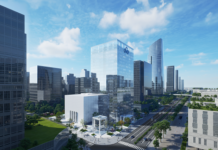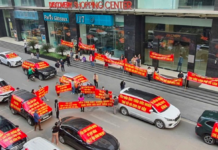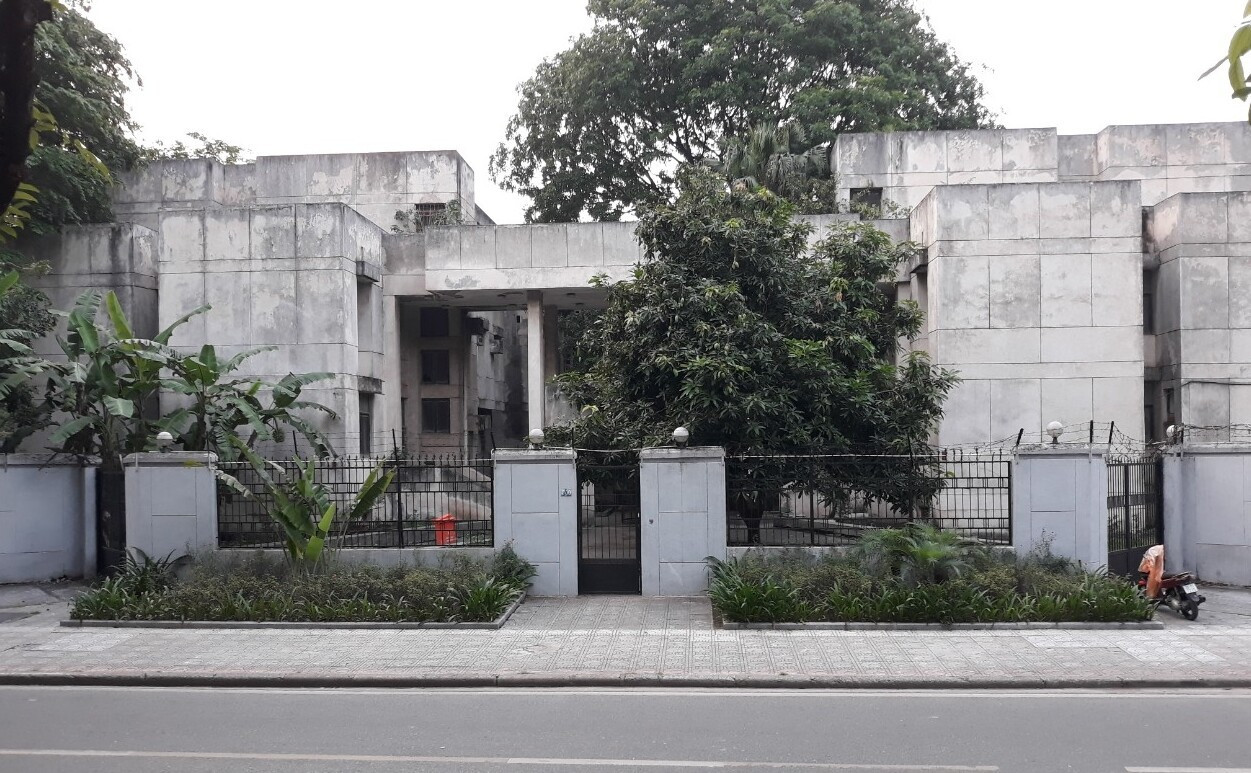
The 300 Kim Mã building before renovation, shrouded in gloom and moss. (Image: Wikipedia)
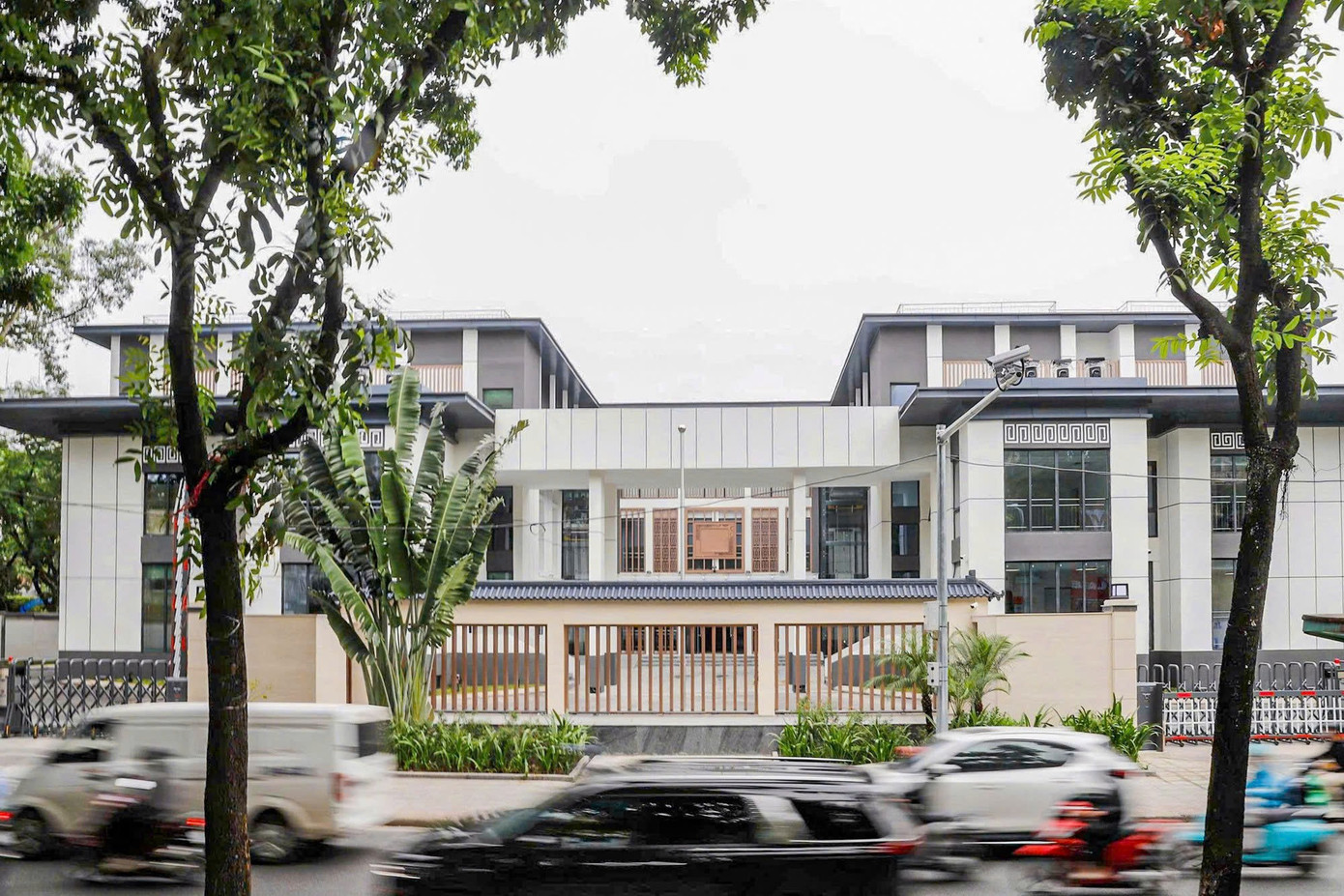
Constructed in 1987 and completed in 1991, the 300 Kim Mã building (Giảng Võ Ward, Hanoi) was abruptly abandoned after completion, remaining deserted for over 30 years.

During this time, it became a “mysterious enigma” in the heart of the capital. Moss-covered walls, shattered windows, and overgrown vegetation created a haunting scene amidst a bustling area.
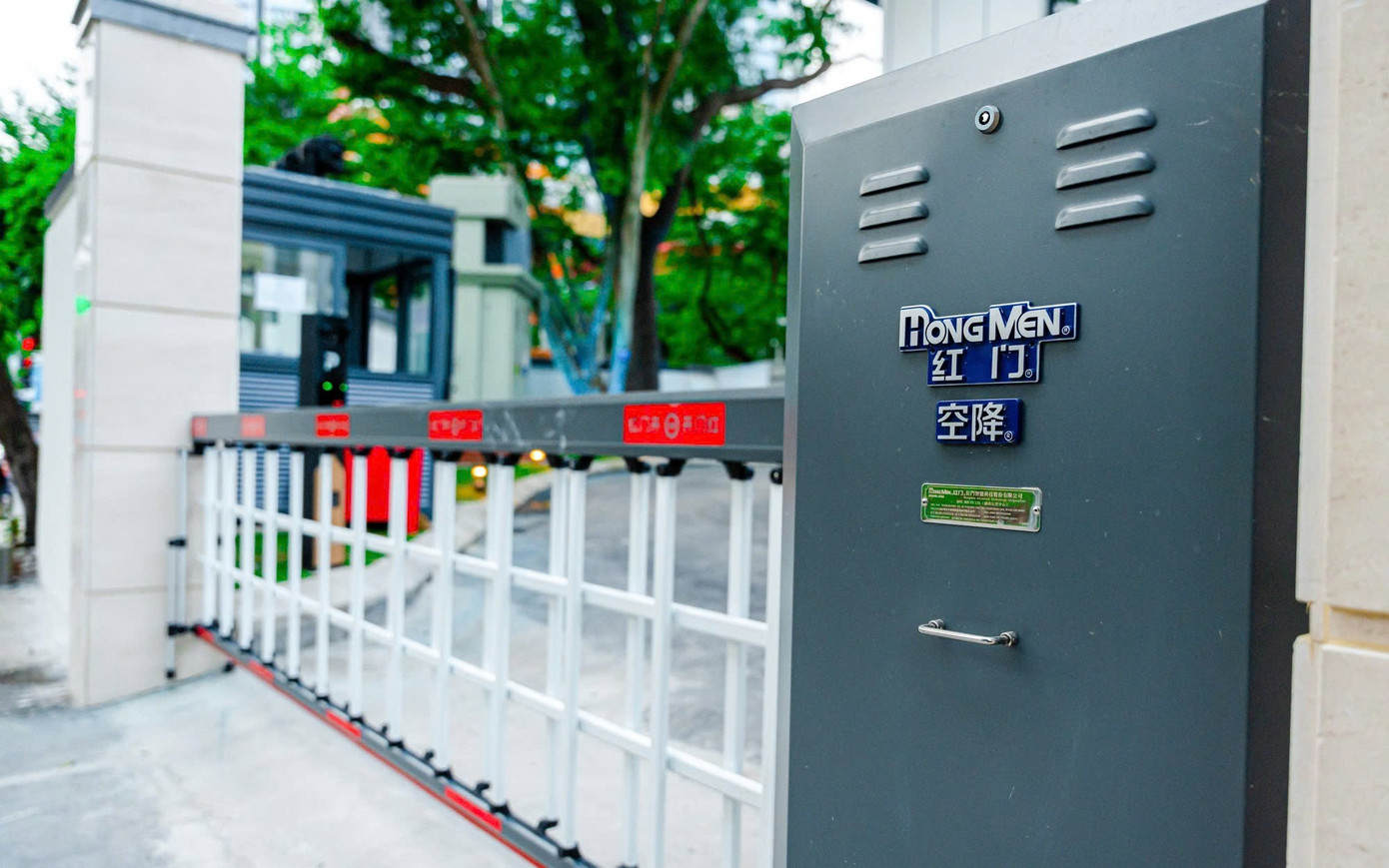
The silent, massive structure in the city center sparked curiosity among locals. Whispered tales and mysterious rumors surrounded the building, making it one of Hanoi’s most talked-about locations, known as the “300 Kim Mã Haunted House.”
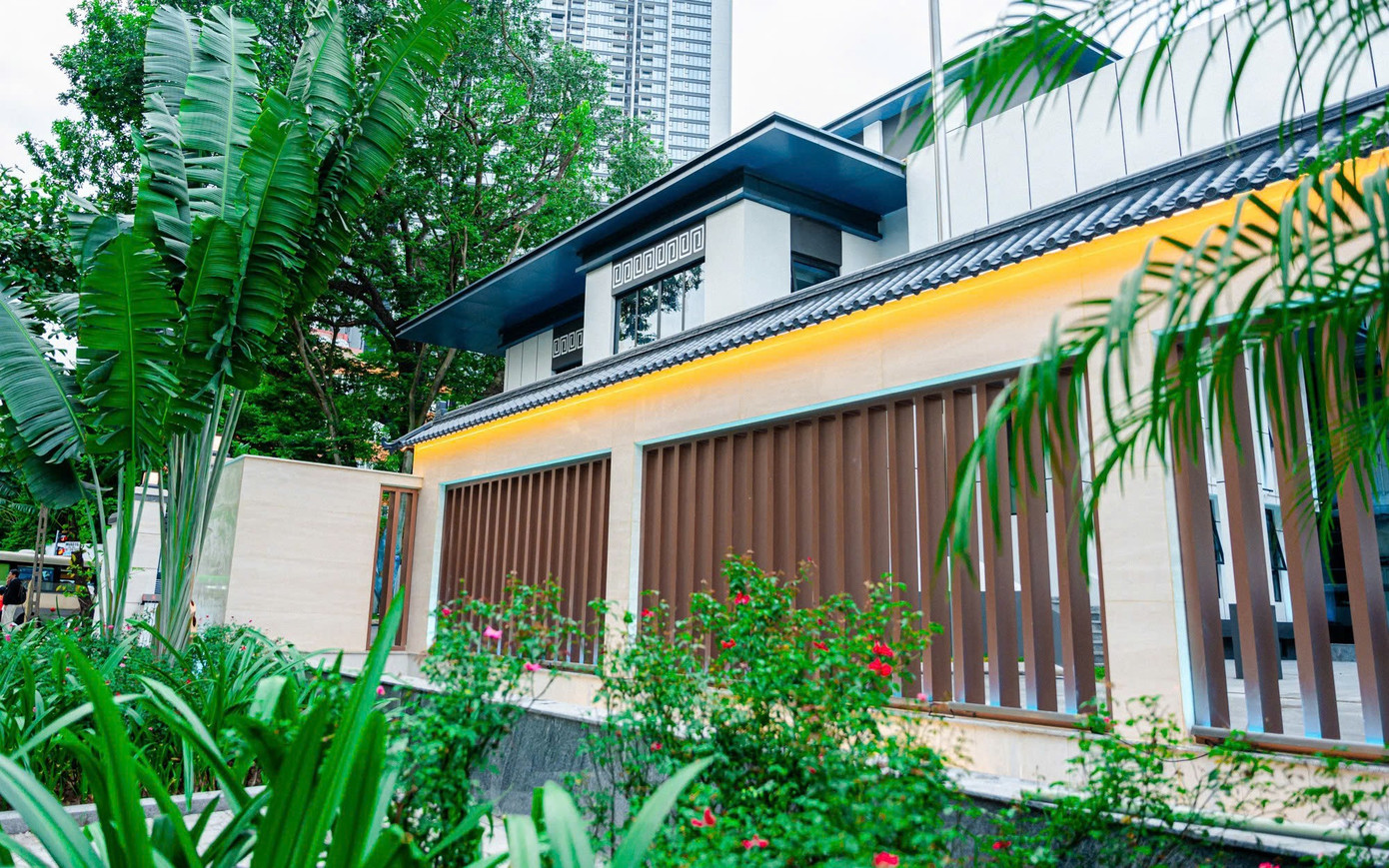
In 2018, the Bulgarian Embassy handed over the site to Vietnamese authorities. By early 2025, the area was fenced, covered, and prepared for a major renovation. Within a year, the entire old building was transformed into a modern, impressive structure.
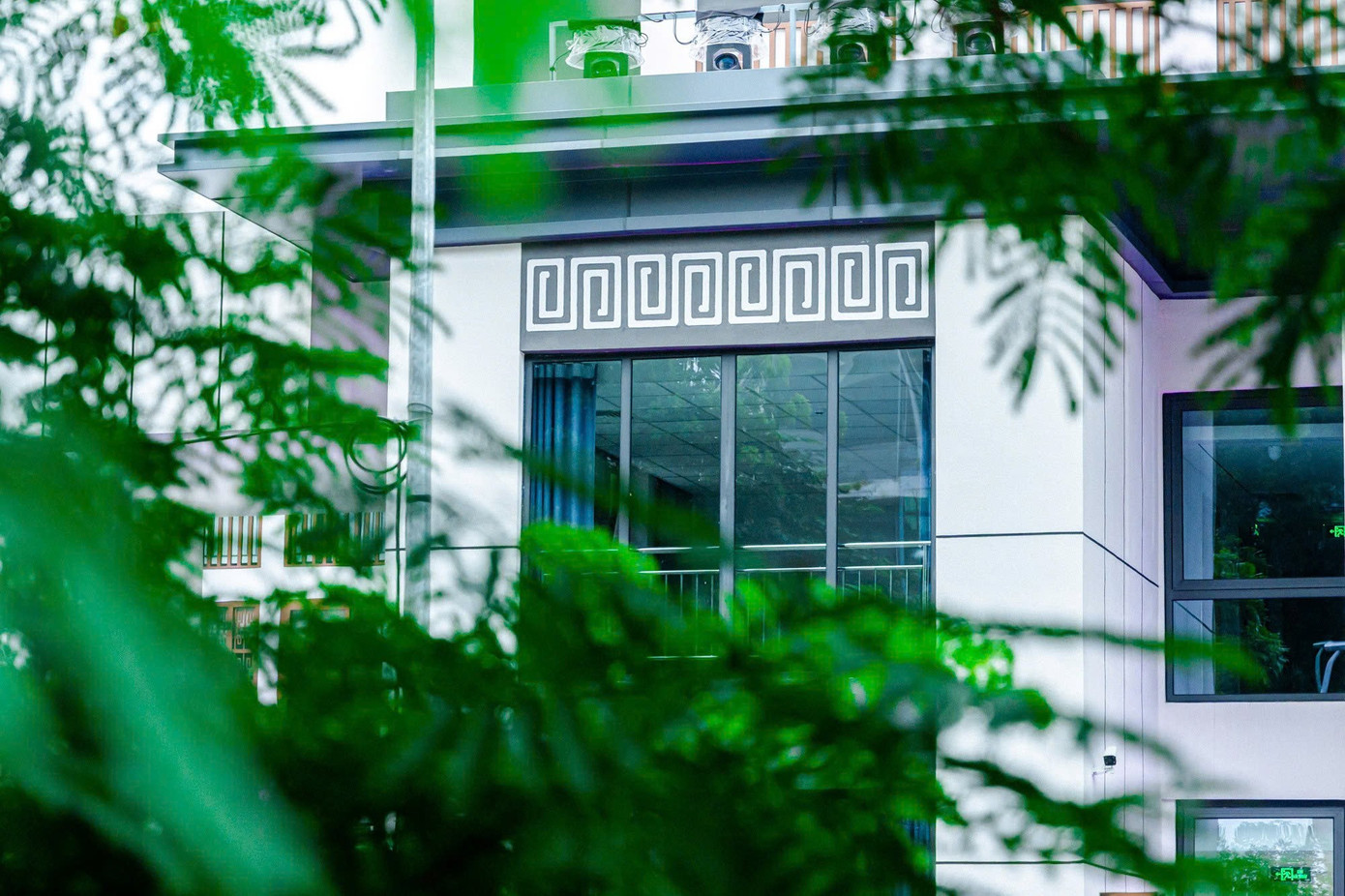
Retaining its main architectural framework, the building underwent a complete makeover. Pristine white paint replaced the weathered walls, complemented by deep green tiles and intricate East Asian motifs, creating a blend of modernity and elegance.
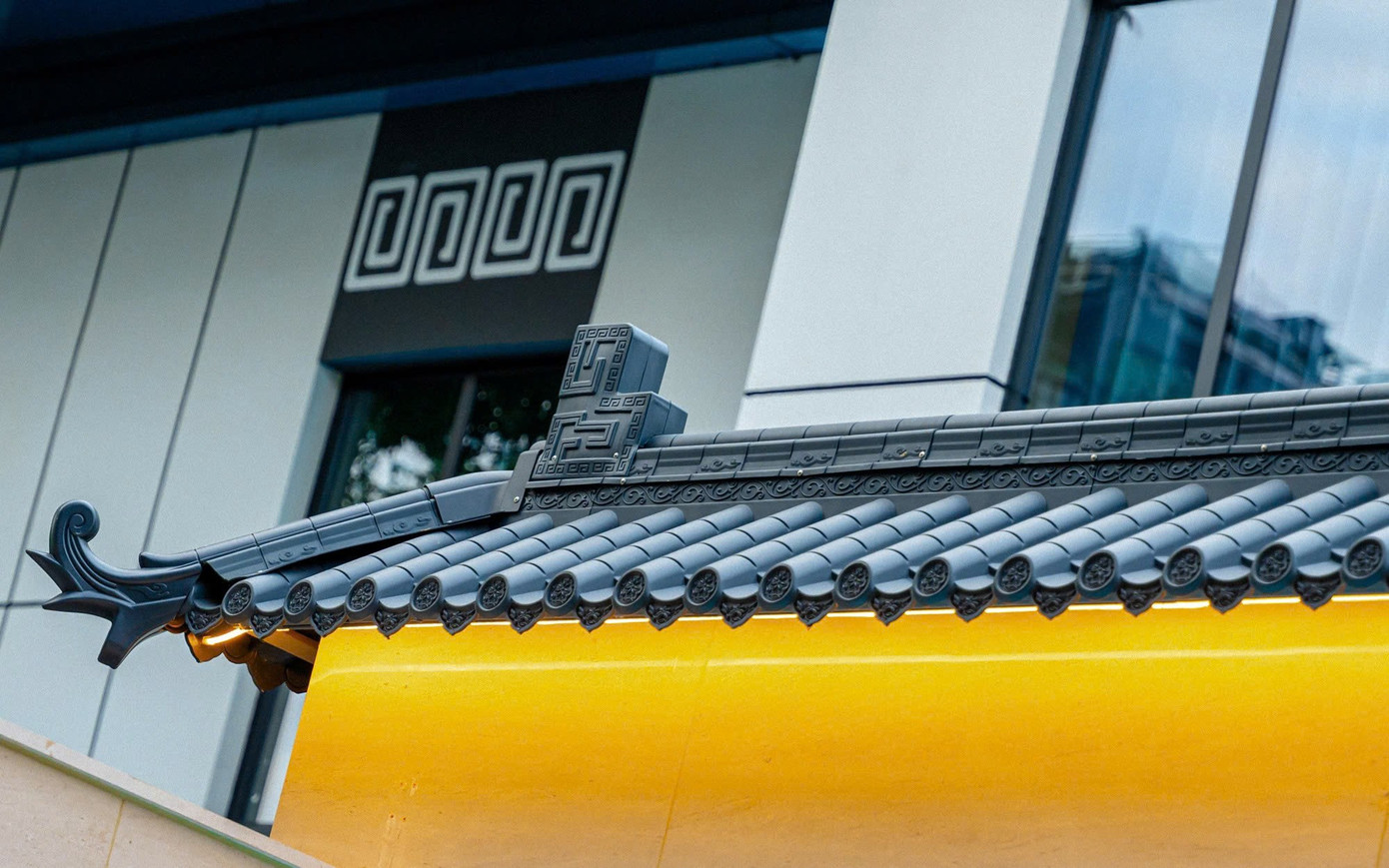
The main entrance features an automated access control system, ensuring high security while showcasing professionalism and modern design. New greenery surrounds the building, expanding open spaces and making it more welcoming in the bustling streets.
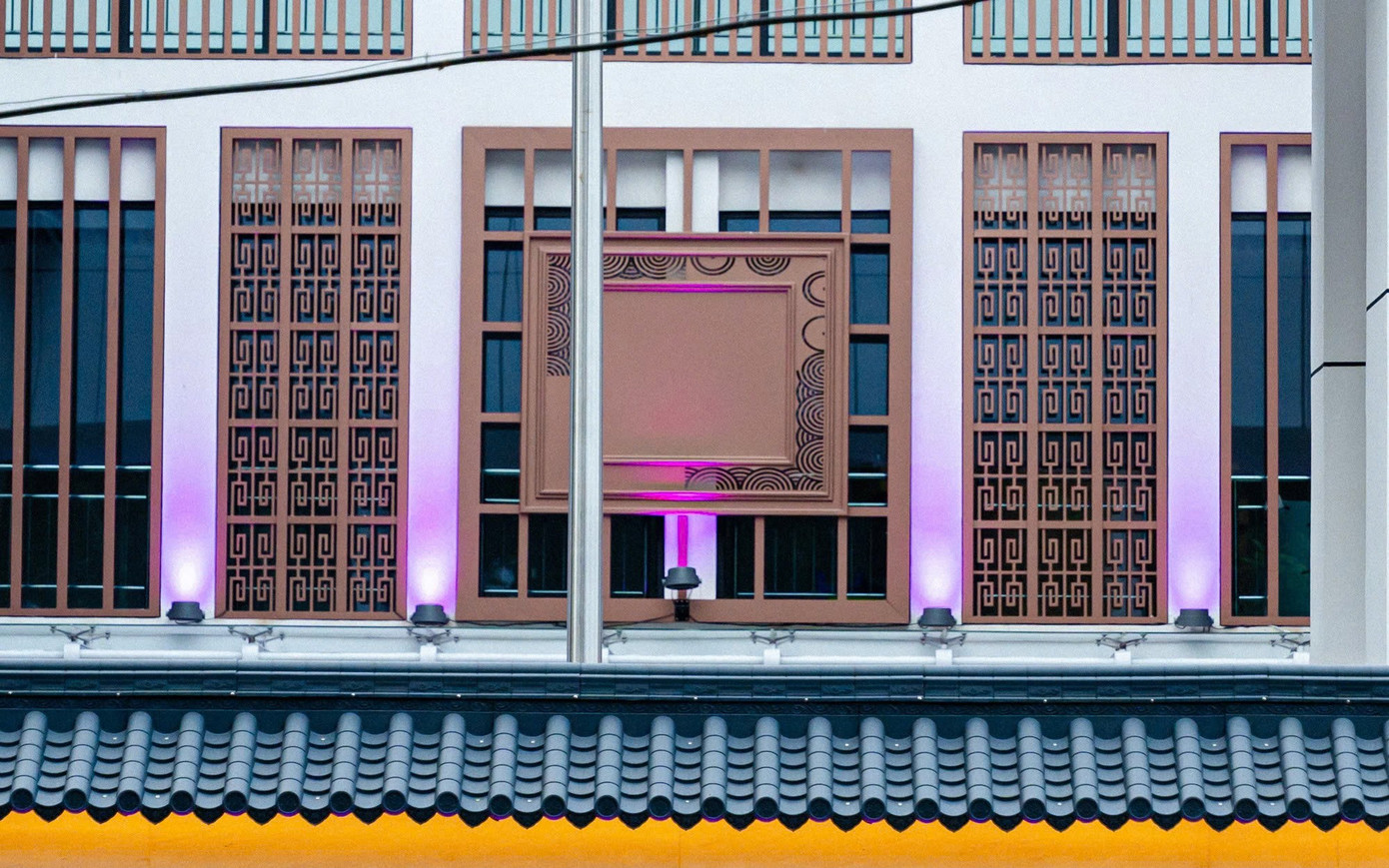
By night, the 300 Kim Mã building dazzles with vibrant lighting, standing out in the Giảng Võ area. Sophisticated lighting, warm yellow hues, and patterned projections bring the façade to life. From afar, the building glows brilliantly, reflecting onto bustling Kim Mã Street and captivating passersby.

Once considered a “no-go zone,” the building now attracts residents who stop to admire, discuss, and photograph it every evening.
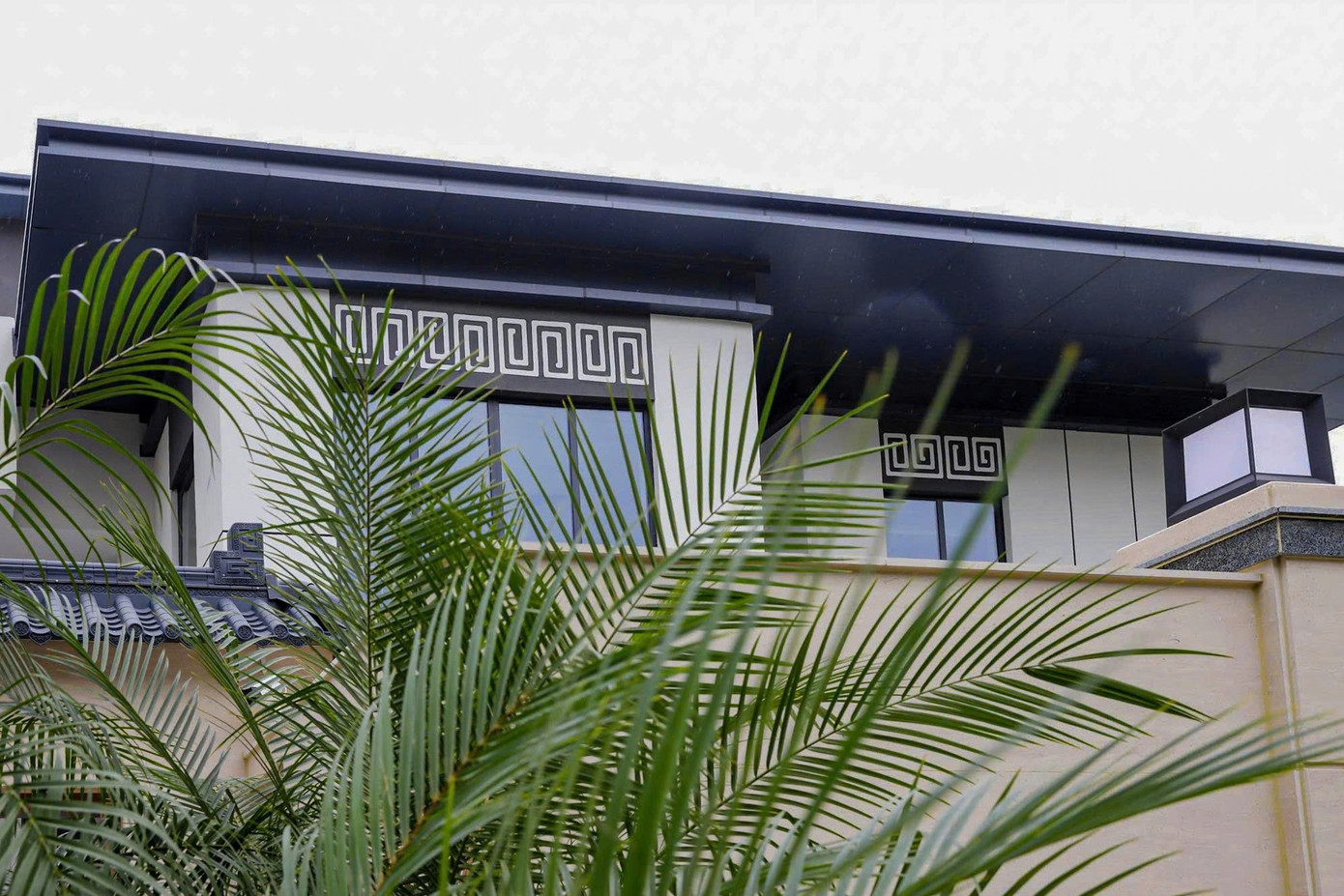
With its sturdy structure, elegant colors, and impressive lighting, the 300 Kim Mã building has transformed from a symbol of decay into a new architectural highlight of Hanoi.
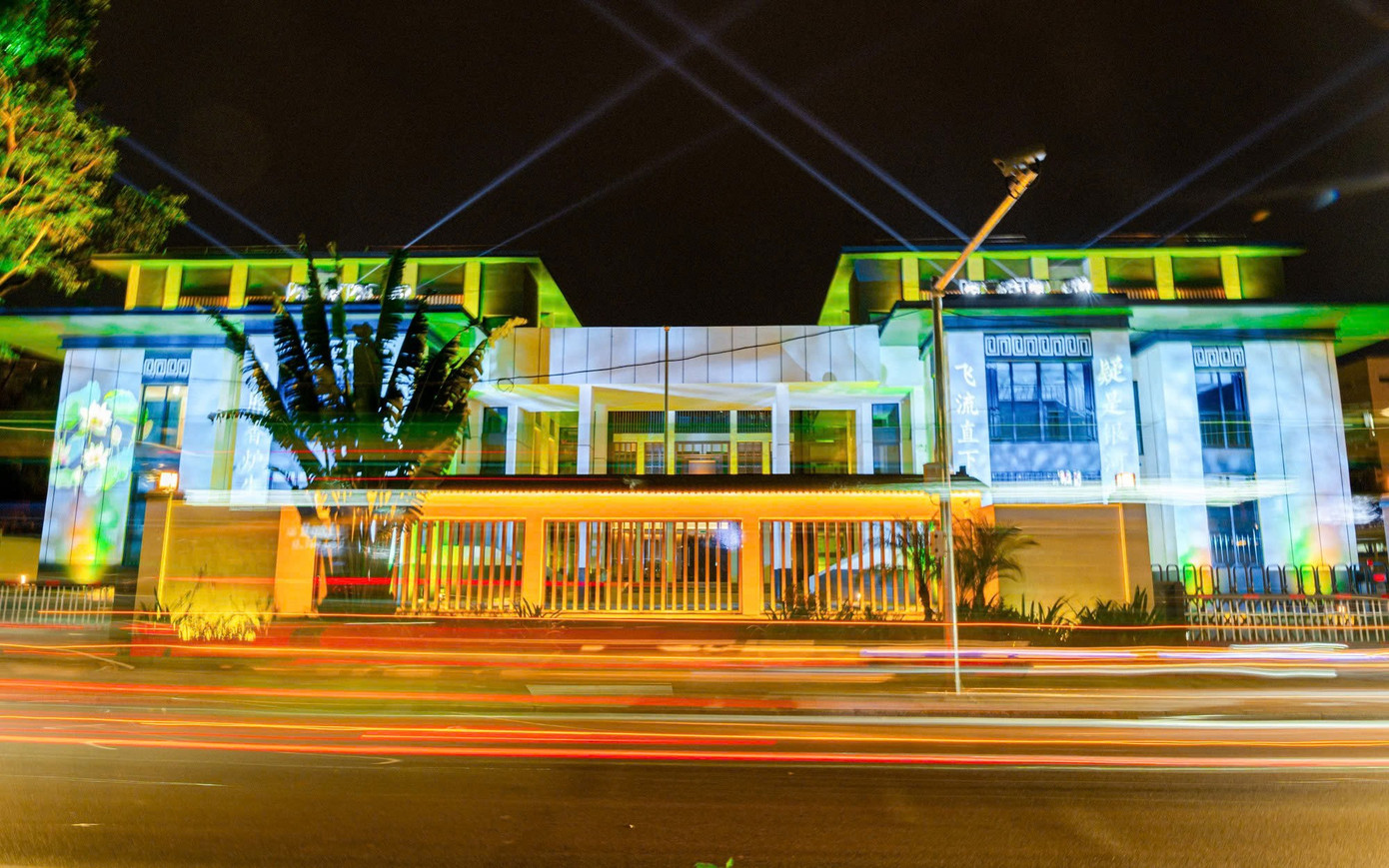
The meticulous renovation not only restored beauty to a prime location in the capital but also revitalized a once-neglected landmark.
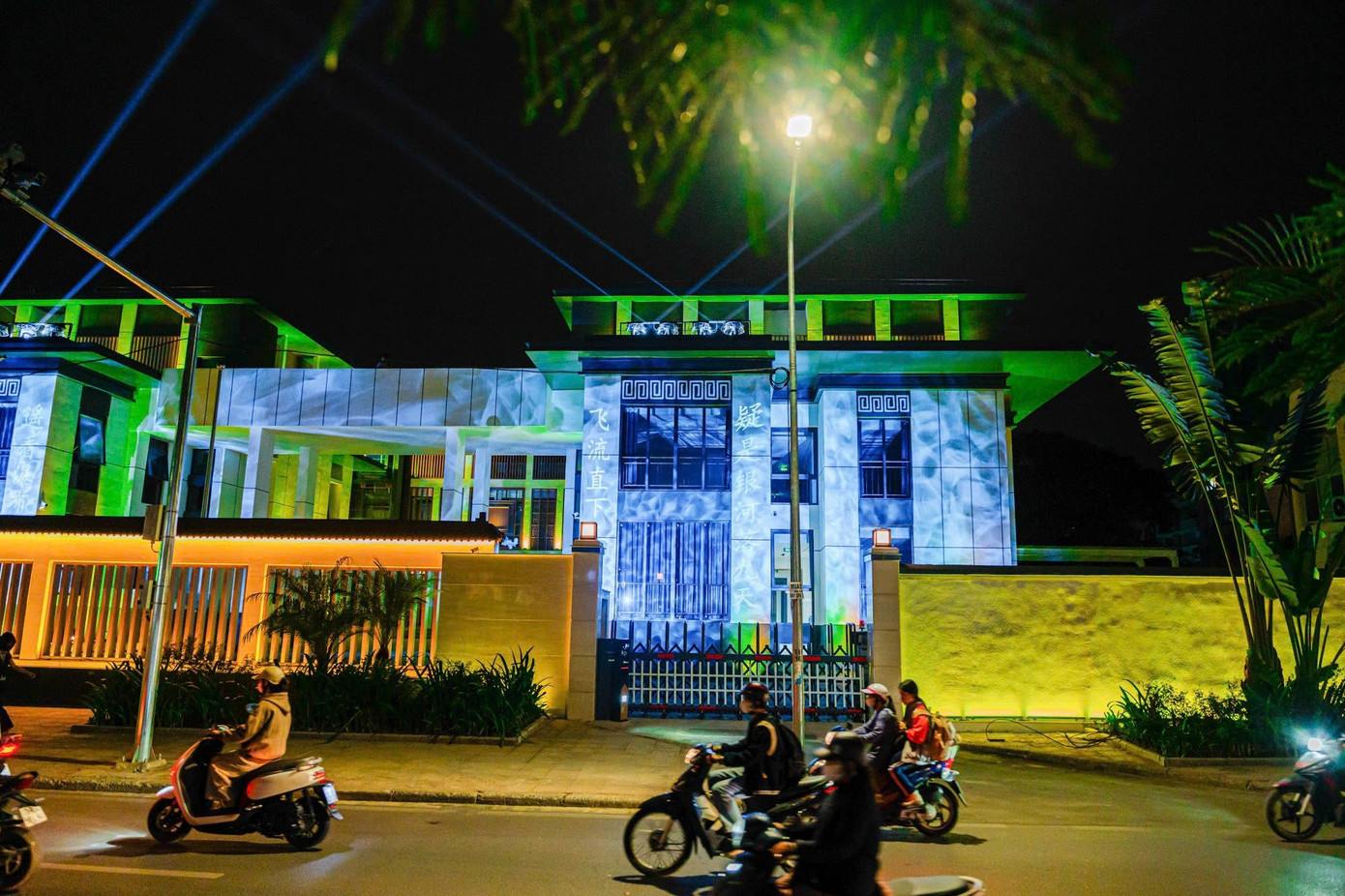
Today, the 300 Kim Mã building stands as a testament to transformation, turning from a symbol of abandonment into a beacon of architectural excellence in Hanoi.

The 300 Kim Mã building now shines as a prime example of how thoughtful renovation can breathe new life into a once-forgotten structure, enhancing Hanoi’s urban landscape.

The 300 Kim Mã building’s transformation showcases how strategic renovation can restore beauty and functionality to a prime urban location, setting a new standard for architectural revival in Hanoi.

The 300 Kim Mã building’s renovation not only restored its beauty but also redefined its role as a vibrant, modern landmark in Hanoi’s urban fabric.
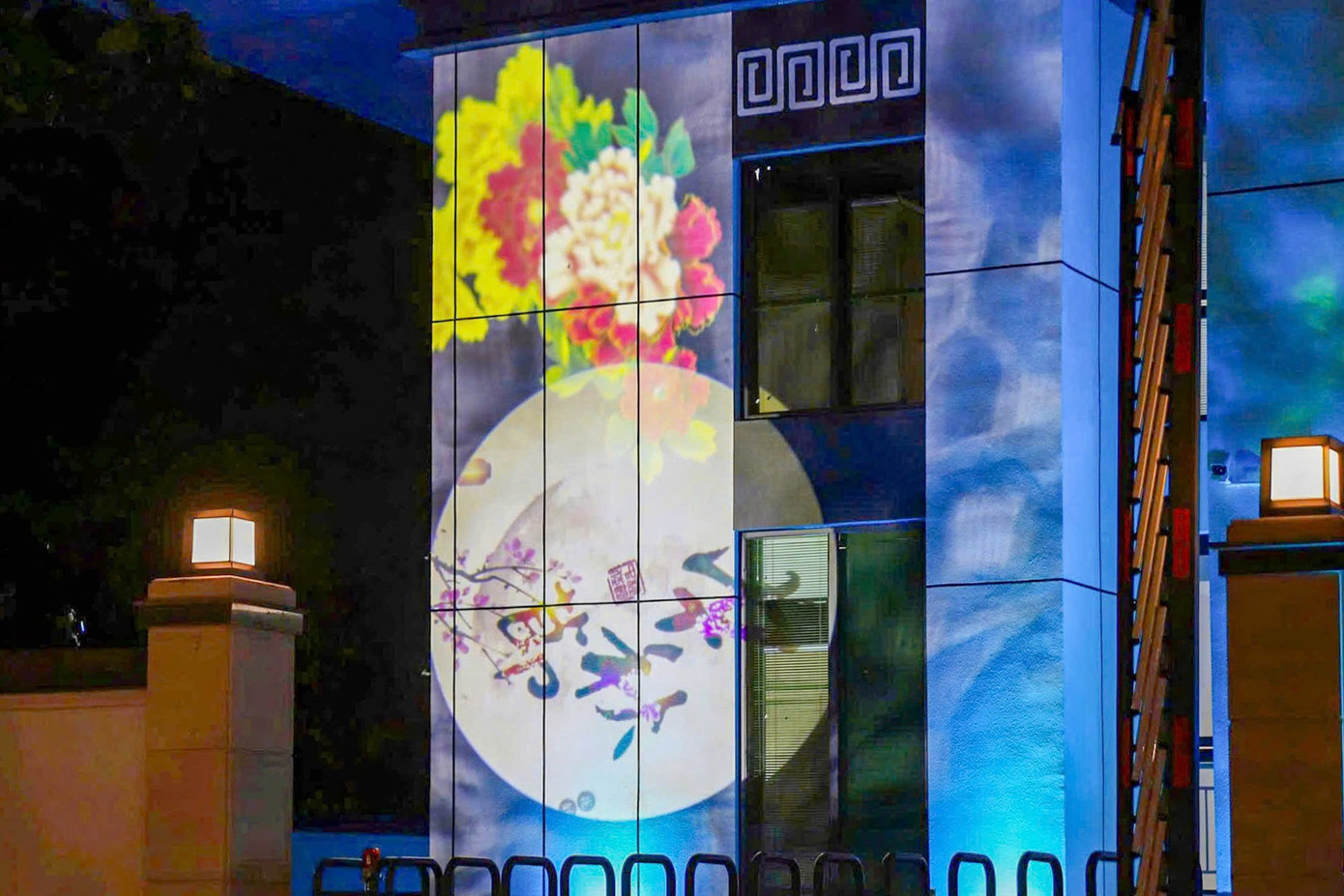
The 300 Kim Mã building’s revival exemplifies how careful planning and execution can turn a neglected site into a thriving urban asset, enriching Hanoi’s architectural heritage.

The 300 Kim Mã building’s transformation highlights the power of renovation to rejuvenate urban spaces, turning a once-abandoned structure into a symbol of progress and beauty in Hanoi.











